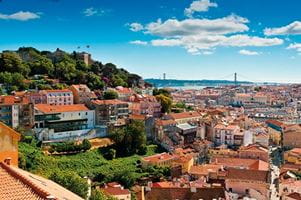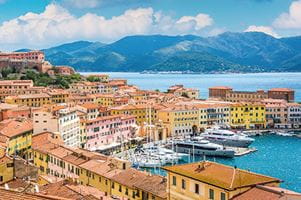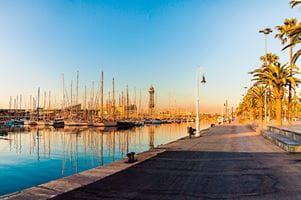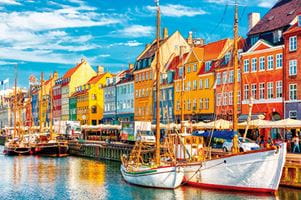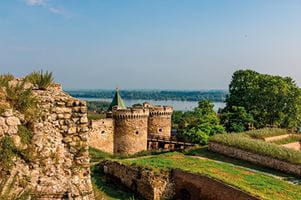Destinations
Thinking of taking a Norwegian fjords cruise?
From dogsledding through picturesque scenery by day to admiring the beauty of the Northern Lights by night, there’s plenty to discover on our cruises to Norway’s fjords.
See the most dramatic landscapes, breathe in the freshest air and gaze at the dazzling night skies on an all-inclusive cruise through the Norwegian fjords. Consistently topping our list of most popular cruise destinations for UK travellers, a cruise to Norway could see you discovering glaciers and waterfalls during the day and admiring the ethereal northern lights at night.
So, what can you expect to see on a fjord cruise?
When is the best time of year to cruise to Norway?

Deep winter – December and January – will afford you more time in the evenings, but there’s more chance of snow around this time.
In February and March the daylight hours are extended but the nights are still long enough for good observational opportunities.
May is the best time to experience Norway as it wakes from its winter sleep, when fruit trees begin to blossom, flowers start to bloom, days are longer and warmer, and birdsong fills the air. This is another truly magical time of year to visit.
Incredible scenery from dawn until dusk

The fjords were created over the course of millions of years by ice, pressure and erosion. The western side of Norway was once home to monumental glaciers that carved deep valleys into an ancient mountain range. As the glaciers melted over time the valleys gradually filled up with seawater to create Norway’s majestic fjords.
There are more than a thousand fjords in Norway and they’ve become a symbol of the country. It’s no wonder taking a cruise through these narrow stretches of water, wedged between towering cliffs, is such an awe-inspiring experience. Perhaps not talked about so often are the beautiful flowers that bloom in the land of the fjords. Visit in springtime and you’ll see a vibrant blanket of colour from your ship.
Glaciers, waterfalls and serene waters

The Norwegian fjords enjoy a uniquely mild climate for much of the year, thanks to the warming Gulf Stream. Despite this, remnants of the prehistoric glaciers that formed the fjords can still be seen – and they are spectacular.
The largest of these is the colossal Jostedal, the largest glacier on mainland Europe, which spans an area of 487 square kilometres. The fjords are also home to some of the highest waterfalls in the world. Cascading down the steep cliffs into the waters below, gliding by one of these on a cruise to Norway is an unforgettable experience. You can enjoy the scenery and culture on a tour of the picturesque ports of Geiranger, Bergen, Tromsø and Flåm.
The Northern Lights

Norway cruises provide the perfect opportunity to witness the spectacular northern lights, nature’s greatest lightshow. Norway is just about the best place in the world to see this celestial carnival of pink, green and violet lights. We take our guests right up to the northern tip of the country into the Arctic Circle on a voyage of discovery. Searching for the northern lights takes you to Bergen, Alta, Tromsø, Flåm and Ålesund.
Plus, as with every Saga cruise, you will be treated to a host of services on board including all meals, 24-hour room service and many activities. We’ll even equip you with your own Arctic jacket!
Frequently asked questions
Where can I see the Northern Lights?
The earth’s magnetic field diverts the solar wind to our poles which is why the phenomenon only happens in the high north, or far south (called Aurora Australis).
Up in the northern hemisphere though, Alaska and Canada are good viewing spots, but in Europe, you must head to Iceland or Scandinavia, with Norway being the best and most popular place to see them.
For your best chance of viewing the Aurora Borealis travel to the north of Norway, crossing the Arctic Circle into regions like Alta and Tromsø. The Northern Lights belt hits this area all along the coast. There’s no guarantee that you will glimpse the phenomena, but there’s no place on Earth that offers you better odds.
Why are the Northern Lights known as Aurora Borealis?
Pierre Gassendi was a 17th century French scientist who coined the name Aurora Borealis. With Aurora stemming from the Roman Goddess of dawn, and Borealis comes from the Greek word boreas for the north wind.
What causes the Aurora Borealis?
The science behind the phenomenon is less romantic than the Norse mythological version, but no less fascinating. The Northern Lights are produced when solar wind, which is made up of charged particles from our sun, interacts with our atmosphere. The charged particles make the gases in our atmosphere glow, like a florescent tube light.
The colour depends on which gas in our atmosphere the particles collide with, with oxygen creating the yellow-green colour and nitrogen creating the crimson.
What did the Vikings make of the Northern Lights?
The Northern Lights were once known to the Vikings as the battle charge of the Valkyries; Norse mythical figures who oversee battle, deciding who lives and who dies. Their armour was said to shimmer in the darkness and create the colours of the Aurora Borealis.
What is the best way to photograph the Northern Lights?
Whether you’re a keen photographer, or just want to snap a picture to remember the experience, there are ways to get a great image if you’re patient. The best kind of cameras for this task come equipped with a wide lens. Deactivate your flash and switch off the autofocus on your camera. You’ll need to stabilise your camera as much as possible to allow your lens to successfully capture light. Tripods are perfect, and there are little portable ones for small cameras that are great if you don’t fancy bringing expensive equipment on your cruise.
Tempted by a cruise to Norway and its fjords? Find out more.
The opinions expressed are those of the author and are not held by Saga unless specifically stated.
The material is for general information only and does not constitute investment, tax, legal, medical or other form of advice. You should not rely on this information to make (or refrain from making) any decisions. Always obtain independent, professional advice for your own particular situation.
